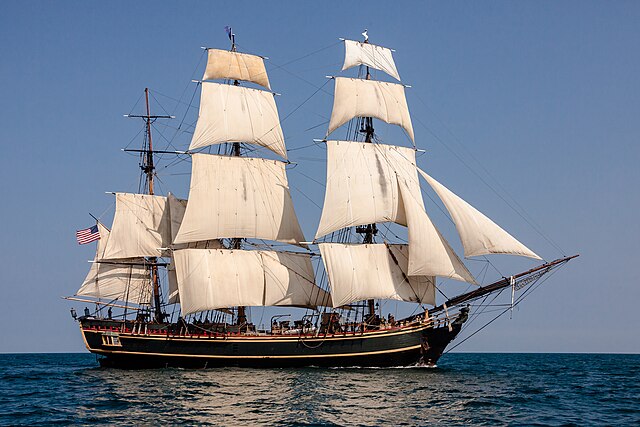John Adams, known as Jack Adams, was the last survivor of the Bounty mutineers who settled on Pitcairn Island in January 1790, the year after the mutiny. His real name was John Adams, but he used the name Alexander Smith until he was discovered in 1808 by Captain Mayhew Folger of the American whaling ship Topaz. His children used the surname "Adams".
John Adams
Descendants of the mutineers John Adams and Matthew Quintal on Norfolk Island, 1862. From left to right: John Adams (1827–1897), son of George Adams; John Quintal (1820–1912), son of Arthur Quintal; George Adams (1804–1873), son of John Adams; Arthur Quintal (1795–1873), son of Matthew Quintal
1849 painting of John Adams' Wooden House and grave Pitcairn Island
1908 photograph of Wooden House Built by the Mutineers of the 'Bounty,' Pitcairn Island
HMS Bounty, also known as HM Armed Vessel Bounty, was a British merchant ship that the Royal Navy purchased in 1787 for a botanical mission. The ship was sent to the South Pacific Ocean under the command of William Bligh to acquire breadfruit plants and transport them to the British West Indies. That mission was never completed owing to a 1789 mutiny led by acting lieutenant Fletcher Christian, an incident now popularly known as the Mutiny on the Bounty. The mutineers later burned Bounty while she was moored at Pitcairn Island in the Southern Pacific Ocean in 1790. An American adventurer helped land several remains of Bounty in 1957.
Replica of Bounty, built in 1960
Plan of the lower decks of the Bounty
Plan of the lower decks of the Bounty
Plan and section of the Bounty Armed Transport showing the manner of fitting and stowing the pots for receiving the bread-fruit plants, from William Bligh's 1792 account of the voyage and mutiny, entitled A Voyage to the South Sea, available from Project Gutenberg.








